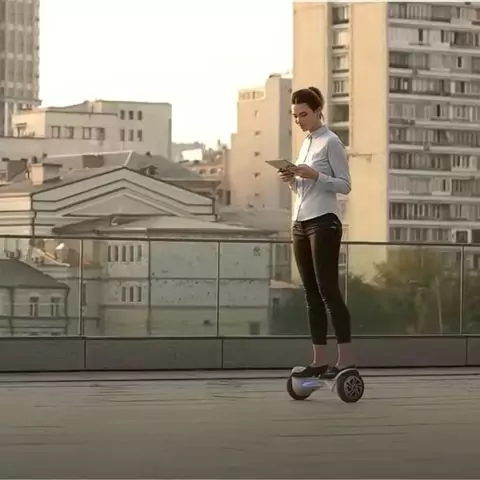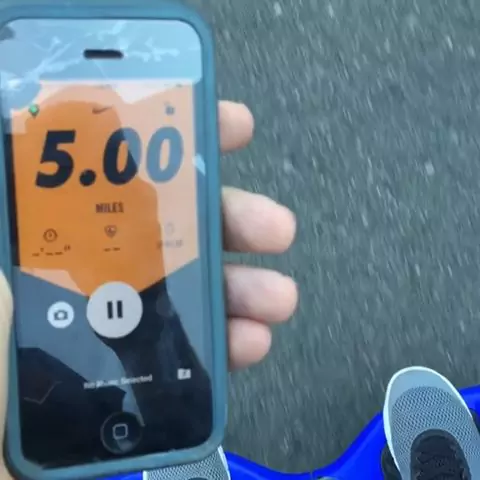Yes, you can ride a hoverboard on grass, but it may not be as smooth as on a flat surface. The terrain may affect the balance and maneuverability of the hoverboard.
When riding on grass, it’s important to be cautious and mindful of the uneven surface for a safe experience. Hoverboards have become a popular mode of transportation, offering a fun and convenient way to get around. However, riding a hoverboard on grass is a bit different from riding on pavement.
We will discuss the factors to consider when riding a hoverboard on grass, the potential challenges, and some tips to make the experience more enjoyable. Whether you’re a beginner or an experienced rider, understanding how to navigate grassy terrain with a hoverboard is essential for a smooth and safe ride.
Contents
Understanding The Dynamics Of Hoverboards On Grass
Understanding the dynamics of hoverboards on grass is essential for an exhilarating and safe riding experience. While hoverboards are designed for smooth surfaces, maneuvering them on grass can pose unique challenges. Here, we delve into the intricacies of riding hoverboards on grass, from balancing challenges to tire design considerations, to help you make an informed decision before taking your hoverboard off-road.
Balancing Challenges Of Hoverboarding On Grass
Riding a hoverboard on grass presents distinct balancing challenges due to the uneven terrain. The grassy surface can cause instability and affect the board’s responsiveness, requiring riders to adapt their posture and technique. Maintaining equilibrium becomes crucial, as sudden bumps or uneven patches can impact stability. Consequently, riders must enhance their core strength and agility to navigate grassy areas efficiently.
Considerations For Hoverboard Tire Design For Grass Terrain
When riding on grass, the design of the hoverboard tires plays a pivotal role in ensuring optimal performance. The tire’s tread pattern and width influence traction, stability, and maneuverability on grassy surfaces. Inclined treads with deep grooves enhance grip on grass, while wider tires provide better stability and weight distribution. Manufacturers are continually innovating tire designs to cater to off-road riding, offering features such as larger, air-filled tires for improved shock absorption and enhanced ride comfort on grassy terrains.

Credit: www.youtube.com
Tips For Riding A Hoverboard On Grass
Riding a hoverboard on grass can be an exhilarating experience, but it requires a different set of skills and techniques compared to riding on smooth, flat surfaces. Here are some essential tips for mastering the art of riding a hoverboard on grass, ensuring a seamless and enjoyable experience.
Selecting Suitable Hoverboard Models For Grass Riding
When selecting a hoverboard for grass riding, it is essential to choose a model with sturdy, robust tires that can handle the uneven terrain. Look for hoverboards with larger diameter wheels, preferably 8.5 inches or larger, to navigate through grassy areas more effectively. Additionally, opt for models with powerful motors to provide the necessary torque and propulsion on grassy surfaces.
Mastering Control And Maneuvering Techniques On Grass
Controlling a hoverboard on grass requires a different approach compared to riding on pavement. To master maneuvering on grass, distribute your weight evenly and slightly lean forward to maintain traction. Gradually increase and decrease your speed to prevent loss of control, and practice turning at a slower pace to navigate through uneven terrain smoothly. Develop a keen sense of balance and keep your center of gravity aligned to maintain stability while riding on grass.
Safety Precautions For Hoverboarding On Grass
When it comes to riding a hoverboard on grass, safety precautions are crucial to ensure a smooth and secure experience. Hoverboarding on grass can provide a thrilling and unique adventure, but it also introduces specific safety concerns that need to be addressed. Understanding the importance of protective gear for grass riding and being aware of terrain-specific safety hazards are essential for a safe and enjoyable hoverboarding experience.
Importance Of Protective Gear For Grass Riding
Wearing the right protective gear is fundamental for ensuring safety while hoverboarding on grass. Protective gear, including a helmet, knee and elbow pads, and wrist guards, can significantly minimize the risk of injuries in case of falls. Investing in quality protective gear designed for hoverboarding activities on uneven terrain can provide crucial protection and peace of mind.
Addressing Terrain-specific Safety Hazards
When hoverboarding on grass, it’s important to be mindful of terrain-specific safety hazards that may not be present when riding on smoother surfaces. Uneven ground, hidden obstacles, and varying grass heights can pose potential risks. Maintaining awareness of the terrain and understanding the potential hazards can help riders navigate grassy areas safely.
Enhancing The Grass Riding Experience
Potential Modifications For Improved Grass Riding
Riding a hoverboard on grass can be a thrilling experience, but to optimize your ride, consider making some modifications to your hoverboard for enhanced performance on uneven terrain. Upgrading your hoverboard with off-road tires is a popular choice among riders who frequent grassy areas. These specialized tires provide better traction and stability, allowing you to glide effortlessly over grassy surfaces. Additionally, adjusting the hoverboard’s suspension system can help absorb shocks and bumps, creating a smoother ride. Customizing the board with protective covers can safeguard it from dirt and debris, ensuring longevity and sustained performance.
Leveraging Technology For Optimal Grass Riding Experience
With advancements in technology, riders now have access to innovative features that can elevate their grass riding experience. Investing in a hoverboard equipped with advanced self-balancing technology can significantly improve stability and control, especially on uneven terrain. Furthermore, the integration of app-controlled settings allows riders to fine-tune the hoverboard’s performance based on the specific terrain, creating a customized riding experience. Additionally, the implementation of durable, high-capacity batteries extends ride times, enabling longer excursions on grassy terrains.
Frequently Asked Questions On Can You Ride A Hoverboard On Grass
Can Hoverboards Be Used On Grass?
Yes, most hoverboards can handle short grass or rough terrain but may struggle on long or wet grass.
Are There Hoverboard Models Designed For Off-road Use?
Yes, there are specialized off-road hoverboards with larger wheels and more powerful motors suitable for grass and rough terrain.
What Precautions Should Be Taken When Riding A Hoverboard On Grass?
Make sure to inspect the terrain for bumps, holes, or debris before riding, and ensure your hoverboard is suitable for off-road use.
Conclusion
Riding a hoverboard on grass is possible with the right model and terrain. While some hoverboards may struggle on uneven ground, there are off-road models designed specifically for rougher surfaces. By choosing a suitable hoverboard and practicing cautious control, you can enjoy gliding effortlessly over various outdoor terrains.


